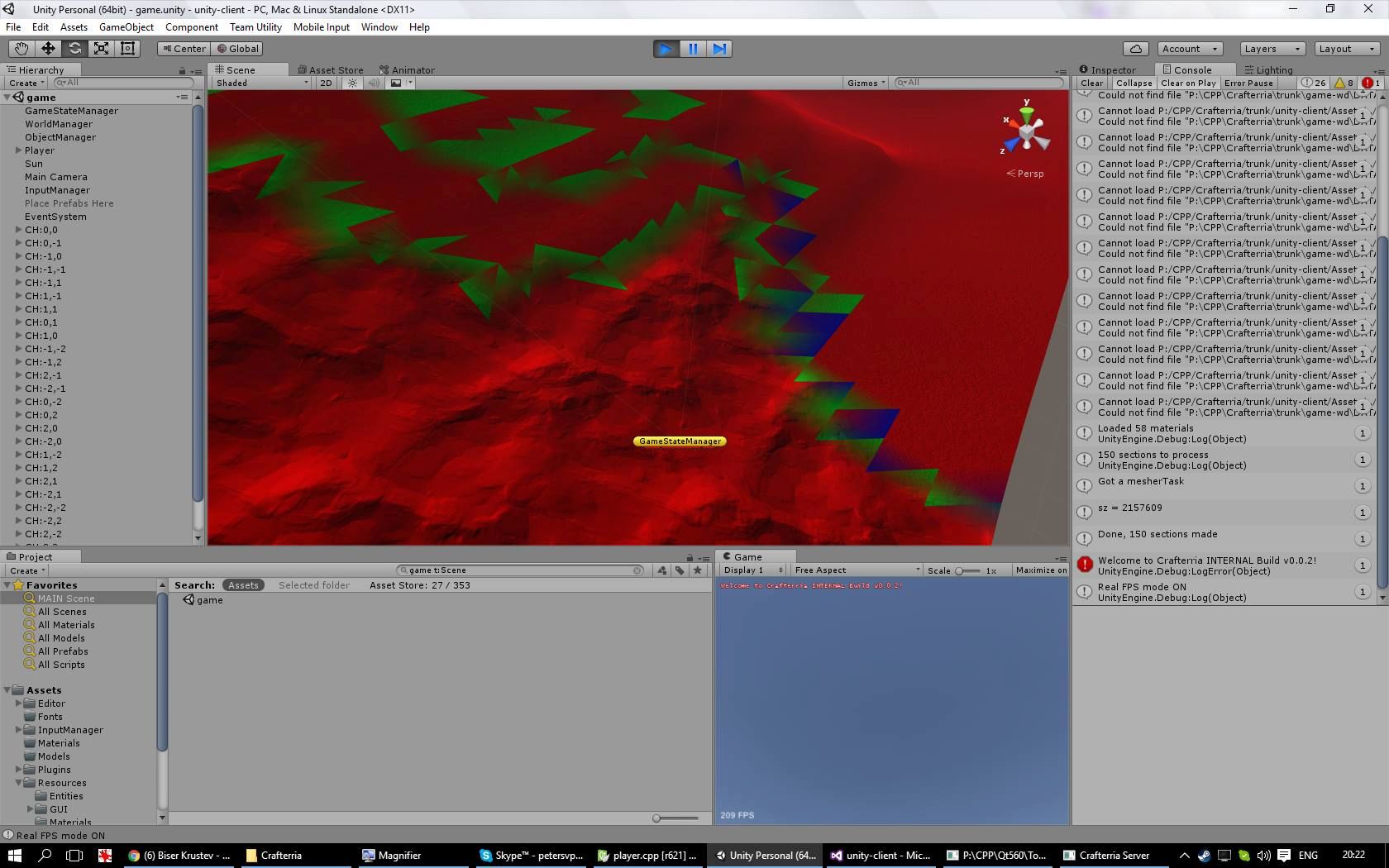hi again, happy new year for everyone, and im sorry if it is asked already but couldnt find it.
I have some questions not directly related to polyvox, and some somewhat related to Cubiquity, and some technical, but i pack them together here.
0.Im using polyvox with unreal latest version and decided this over Cubiquity because it is not supported in current versions of unreal and i seen poly more customisable, correct me if im wrong in this matter.
1.question I generate a mesh with marching cubes and I want to use many materials on it so i need blending, so there is the approach in gems, to make a black duplicate blended parts, then duplicate again num of meeting materials times and additively shade others on it with alpha, my first question is is this the best method still, or u advise to use other?
2. so with the gems algorythm I need to duplicate some vertices, by doing so i have to index them because they will reocurr at least 1 more time, and im doing it in post processing the data isnt that a huge overhead? also im lazy and haven't made a vertex factory yet so im using texture uvs as material and alpha on verts
3. any good way to calculate proper tangent vectors, because of no texture coords to calc from?
4. i downloaded the Cubiquity for unreal and i know it doesn't work for new versions, do you know about anyone who tryed to make it working, or how hard it would be to make it work with newer ones?
5. does Cubiquity use polyvox? I downloaded it form github, but it does not contain generating algs as i seen or mby havent looked at it well enough.
6. what blending method cub uses? as i seen u mentioned it uses something different in some post while i was searching the forums.
thanks in advance


